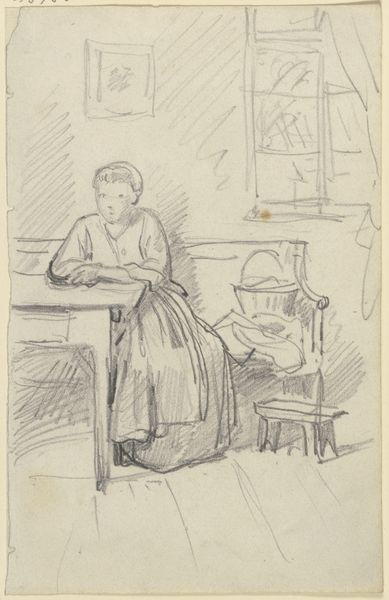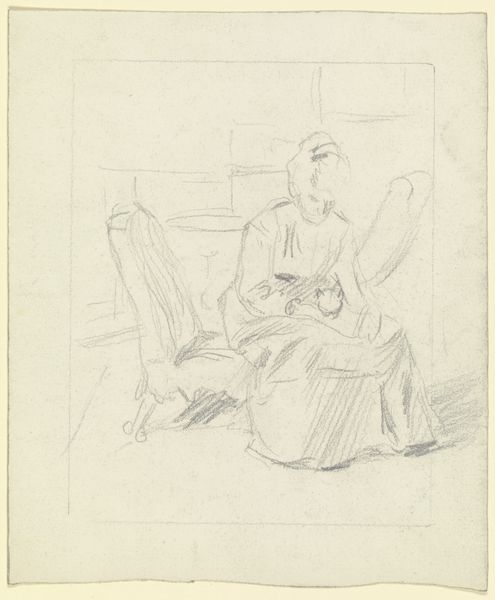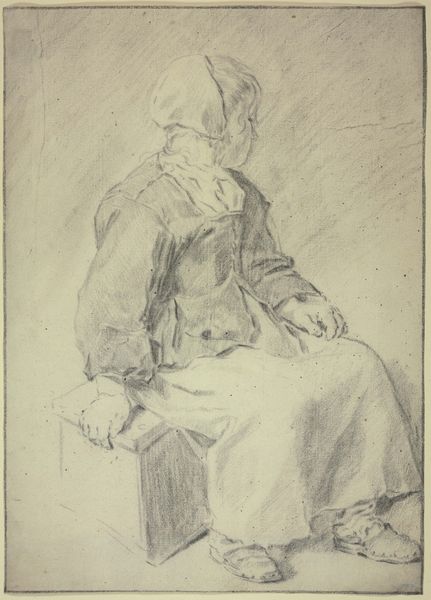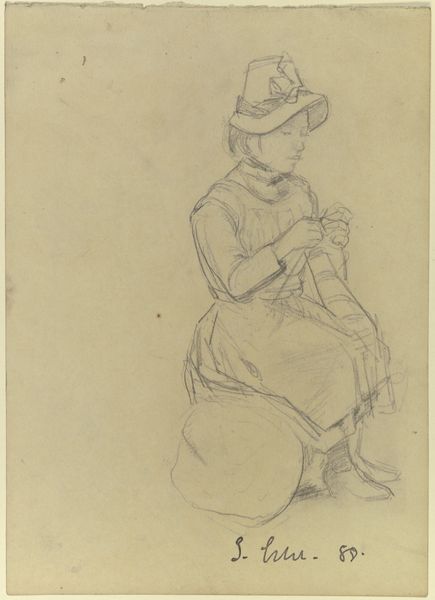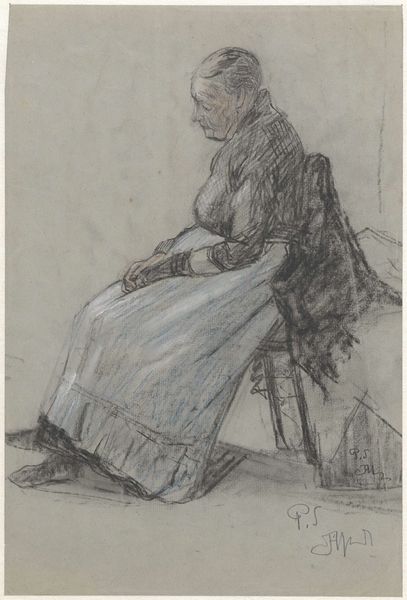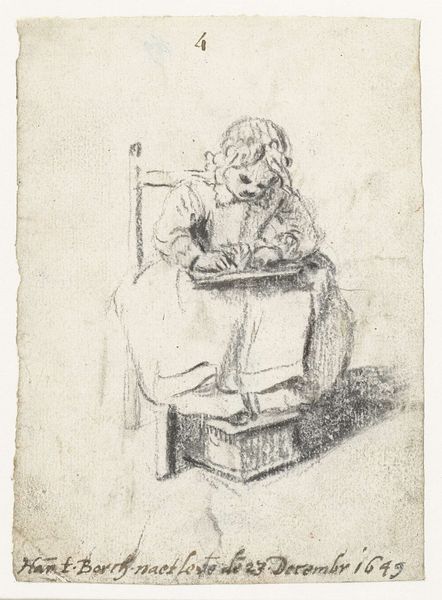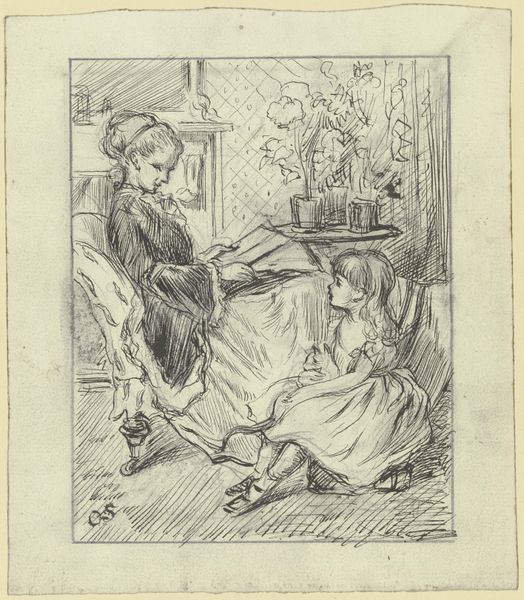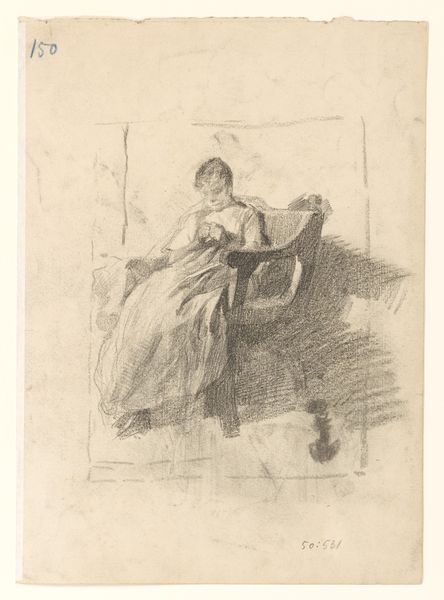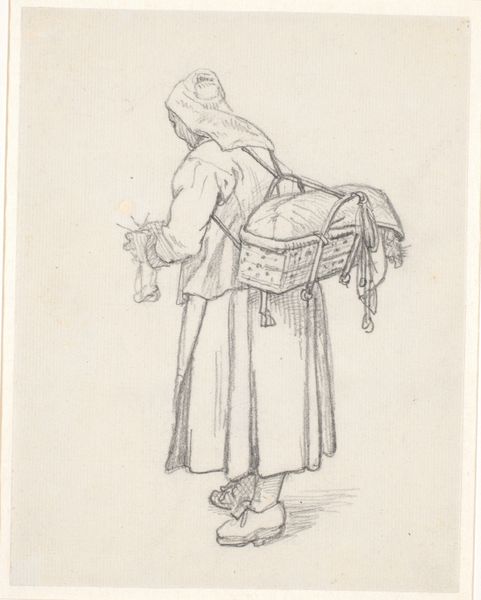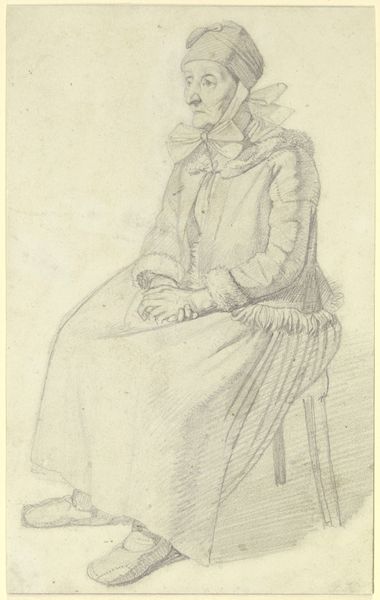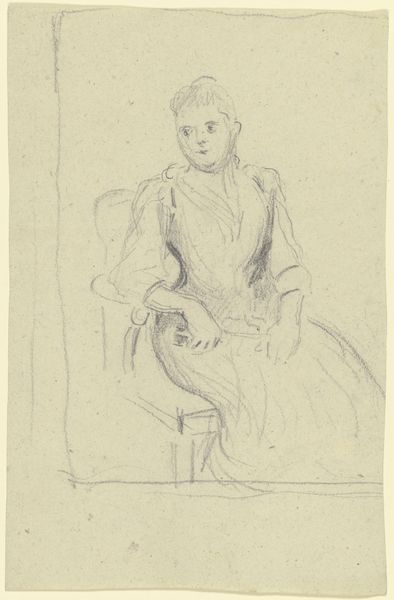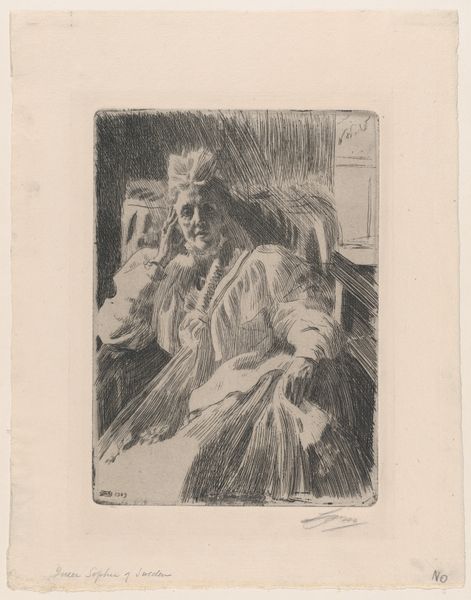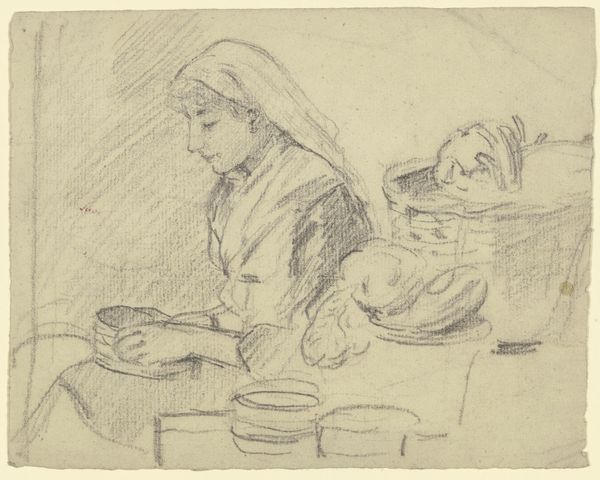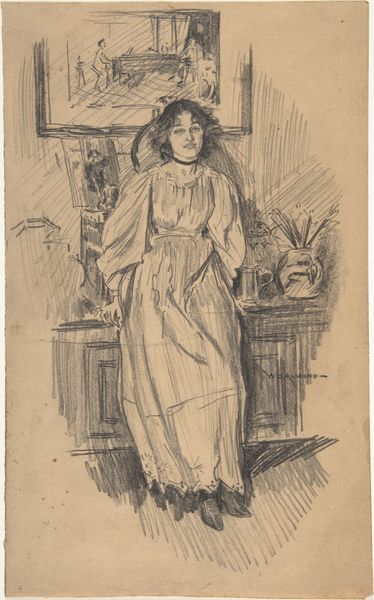
Dimensions: 202 mm (height) x 146 mm (width) (bladmaal)
Curator: What strikes me first is the quiet intimacy of the composition, it’s such a peaceful moment captured. Editor: Yes, Wilhelm Marstrand certainly achieves a contemplative mood in this pencil drawing, “Svensk pige med sytøj, siddende på vinduesbænk,” which translates to "Swedish Girl with Sewing, Sitting on a Window Seat" from 1851. Curator: I am immediately drawn to the precise rendering of light across the planes of her face. You can feel the soft glow illuminating her work, guiding her hands. And, if we consider this piece within the Romanticism movement, it's quite telling of the aesthetic values the work embodies: idealization and the allure of the beauty within the ordinary and commonplace, specifically of the lower class. Editor: Indeed. Her work tells us something about 19th-century expectations, her social role, and the economic structures underpinning it. It’s not just the representation of her form, but her labor we are invited to consider. Think about what it took to create and what labor goes into art: the pencil lead mining, pencil production, paper manufacturing—all are vital for an understanding of the work, just as important as how it may look at face value. Curator: You raise a fair point on production. But consider the texture and value created purely by hatching and the subtlest application of the pencil. Observe how skillfully Marstrand renders the simple cotton cloth. Through artistic manipulation, he presents us with a visual tension: the reality of her labor against the idealization of her being. I wonder if, in some ways, that duality is what interested him in the subject? Editor: Maybe so. Perhaps Marstrand understood the political charge latent within everyday life—how artistic representations of the mundane reflect back upon socio-political actualities. It all brings into focus an ongoing negotiation and tension that reflects production means, societal values, class structure—and how deeply human needs can impact creative choices. Curator: Your interpretation certainly encourages one to pause and ponder its deeper societal relevance, wouldn’t you agree? Editor: Undeniably. I now look upon it considering not only Marstrand's work but also her anonymous contribution through labor—her quiet, unseen persistence adds meaning here beyond formal properties alone.
Comments
No comments
Be the first to comment and join the conversation on the ultimate creative platform.
